When it comes to best metal detector for beach, choosing the right device is crucial for a successful outing. This article will guide you through the key factors to consider when selecting a metal detector for this specific purpose. We will also explore the challenges posed by brackish water, the unique properties of black sand, and the implications of hunting for gold chains. Additionally, we will clarify the meaning of VLF, or Very Low Frequency, which is a common technology used in metal detectors.
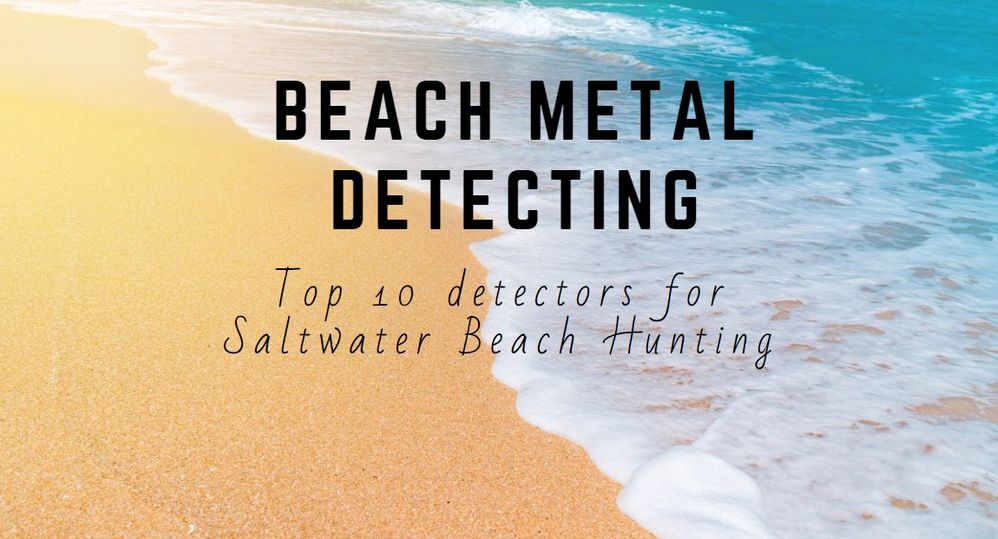
Contents
The most important in this article
The article consists of two parts. The first part of the list includes the best metal detectors for beach hunting, while the second part provides a guide on how to conduct beach hunting effectively. I do recommend reading it even you already know everything about the process.
But you won’t read it, right?
That’s why, especially for you, here are some main points mentioned in the guide:
- Metal detectors for beachcombing are specifically designed to help enthusiasts locate metal objects buried in the sand or washed ashore.
- Not all metal detectors are good for treasure hunting on a salty beach, because salt is an essential obstacle for beach hunting. All saltwater metal detectors are typically more resistant to the effects of salt to ensure stable operation in saltwater.
- You can get a metal detector using a PI principle, and it will ignore soil mineralization, but at that, it has quite poor discrimination.
- If you are not a professional digger, don’t get PI just for beach hunting since PI is required for underwater treasure hunting.
- Yes, beach hunting and underwater treasure hunting are not the same things. You’ll need completely different metal detectors for each option. You can read about underwater treasure hunting in detail here.
- Common metal detectors will do for beach hunting, but they should have some specific features such as ground balance, special. Beach mode, protection from water ingress into the device.
- It is difficult to detect gold since it has low conductivity, and quite often, the device detects and recognizes it as a foil. Gold chains are invisible for most of the metal detectors since the device sees them as separate chain links.
- For this reason, saltwater metal detectors that use high operating frequencies are more preferable for this purpose; multi-frequency ones are even better.
- Black sand is formed from lava, which after volcano eruption gets into the water, and after it cools down, it crashes into a million small back grains of sand. If you go treasure hunting on a beach with black sand, the latter will be a significant obstacle for a metal detector.
- Be ready to dig a lot. Bottle caps, foil, and other iron trash are your’ friends forever’ during beach hunting.
- Use a scoop even if you go metal detecting on the beach, not underwater treasure hunting. Here you can find detailed information about this tool, how to choose it, and where to get.
- Use headphones. Always. Firstly, you won’t miss any weak signals. Secondly, here is the link that will provide you with more reasons why.
Best metal detectors for beach metal detecting
The list of recommended metal detectors for beach hunting includes models from various manufacturers, showcasing a range of functionality and price points. It is common to see multiple detectors from the same brand, as each model is designed with distinct features to cater to different needs and budgets.
Each model is accompanied by a detailed review, providing you with valuable insights before making your purchase. Rest assured, the list does not include any low-quality metal detectors, ensuring that you have access to reliable options.
Selecting the best metal detector for beach hunting can be challenging due to the extensive features offered at different price points. Generally, higher-priced models come equipped with a wider range of functions, enhancing your hunting experience. Be sure to consider your specific needs and budget when evaluating which detector will best suit your beach hunting endeavors.
Nokta Simplex
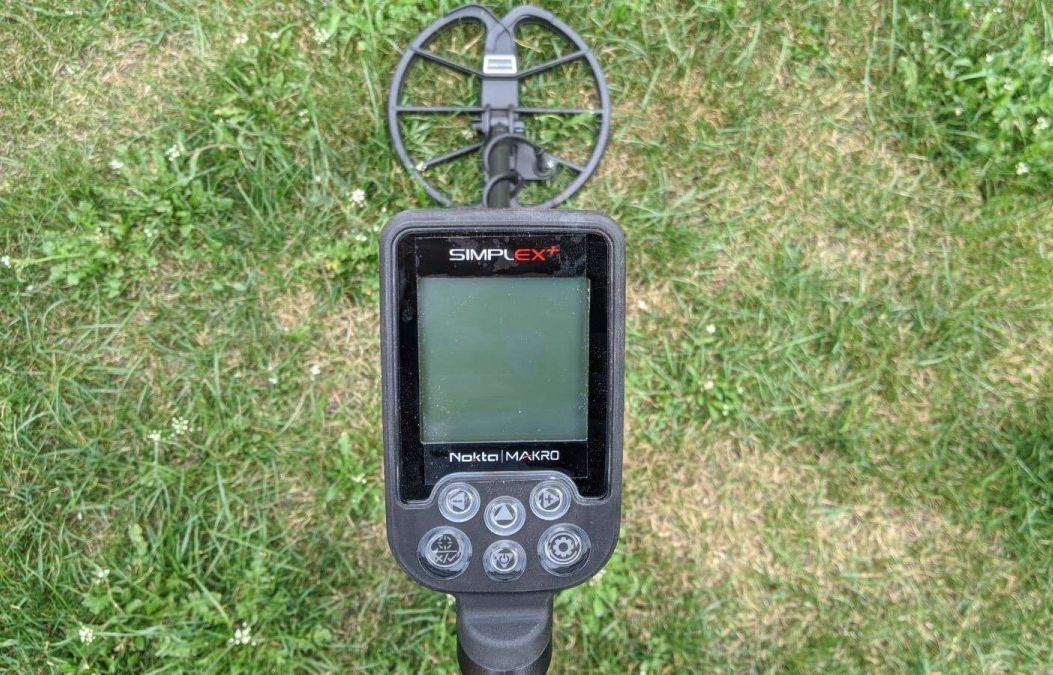
Nokta Simplex metal detector is a device for beginners, which can be submerged. It offers a standard set of functions for metal detectors of this class: automatic ground balance function, several discriminator modes, a pinpointer function, a backlit, etc.
The metal detector has four pre-set search modes: All metal, Beach, Field, Park. We should mention the device search mode called ‘Beach” – it allows beach hunting and metal detecting in brackish water. The metal detector handle vibrates when the device detects a valuable target in the ground. Such a feature allows buch treasure hunting without using a display and headphones.
To cut a long story short – are you a fan of beach hunting? This is a device for you. It won’t be a perfect one, but many metal detectors fail during beach hunting, especially on black sand. However, you won’t find anything better for this price.
- WATERPROOF metal detectors for adults: The Nokta Simplex Ultra boasts all new…
- FULLY CARBON FIBER: Simplex Ultra is a solid product with its carbon fiber…
- ONLINE FIRMWARE UPDATES: Stay up-to-date with firmware updates (via USB on PC)…
- Lightweight (2.6 Ibs / 1.2 kg): Well balanced – Enjoy detecting for extended…
- Handheld Metal Detector with Vivid COLOR LCD Screen: The high-resolution color…
- WATERPROOF metal detectors for adults: The Nokta Simplex Ultra boasts all new…
- FULLY CARBON FIBER: Simplex Ultra is a solid product with its carbon fiber…
- ONLINE FIRMWARE UPDATES: Stay up-to-date with firmware updates (via USB on PC)…
- Lightweight (2.6 Ibs / 1.2 kg): Well balanced – Enjoy detecting for extended…
- Handheld Metal Detector with Vivid COLOR LCD Screen: The high-resolution color…
Last update on 2025-06-09 / Affiliate links / Images from Amazon Product Advertising API / Source: Amazon Affiliates
| Model | Nokta Simplex |
| Weight | 2.9 lbs (1.3 kg) |
| Length (Adjustable) | 25″ – 52″ (63 cm – 132 cm) |
| Batteries | 2300 mAh Lithium Polymer |
| Headphones | Wireless |
| Warranty | 2 Years |
| Operating Principle | VLF |
| Standard Searchcoil | 11″ (28cm) DD Waterproof |
| Operating Frequencies (kHz) | 12 |
| Water resistance | up to 10 feet (3 meters) |
| Search Modes | 4 (All Metal / Field / Park /Beach) |
| Ground Balance | Auto, manual |
| Frequency Shift | Yes |
| Sensitivity | 6 Levels |
| Electronic Pinpointing | Yes |
| VDI (0 to 99 scale) | Yes |
| Build-in flashlight | Yes |
Nokta Makro The Legend
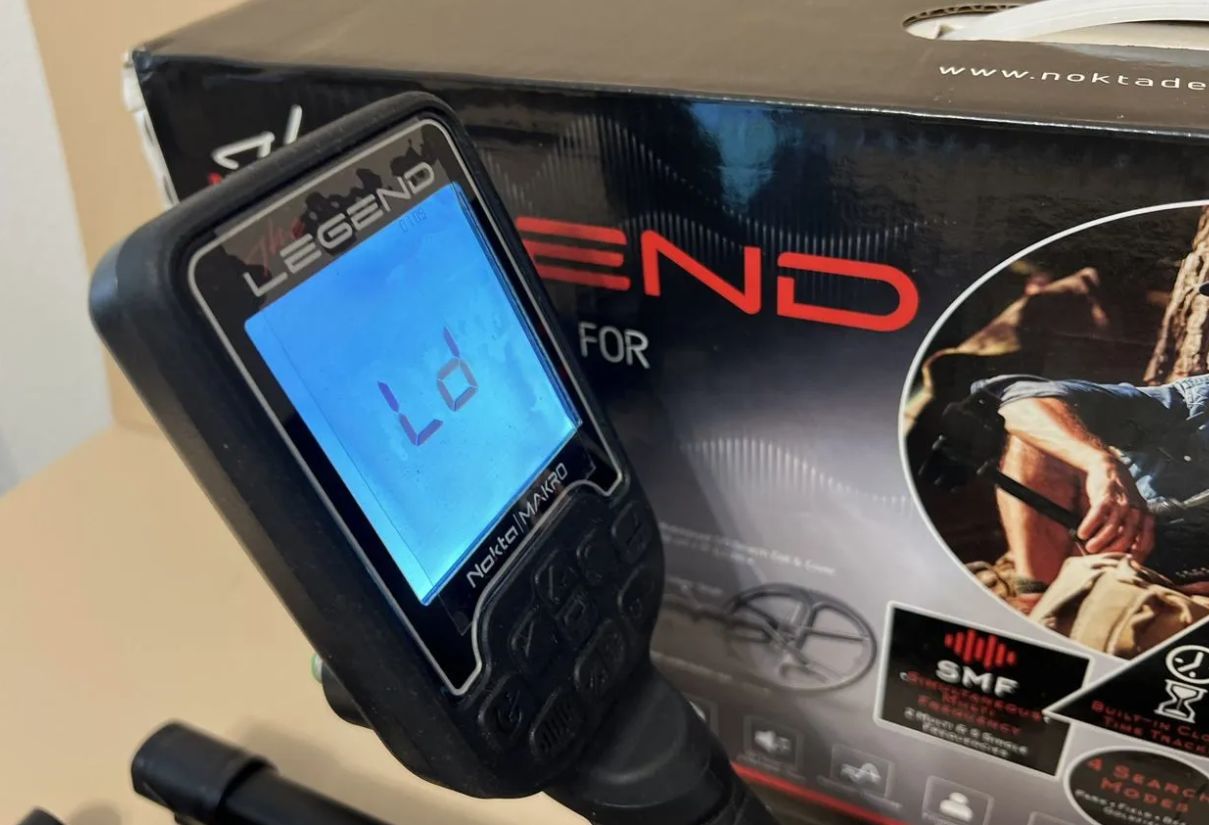
Nokta Makro The Legend metal detector, manufactured in 2022, is designed to accommodate all search types, including underwater treasure hunting at depths of up to 3 meters. It is an excellent choice for beginners, thanks to its well-adjusted preset search modes Park, Field, Beach, and Goldfield, that do not require extensive knowledge of metal detecting basics.
One of the standout features of this metal detector is its ability to operate in both multi-frequency mode, where all frequencies work simultaneously, and single frequency mode. This flexibility allows users to tailor their search experience based on the specific environment and type of treasure being sought.
The device offers the following frequency options:
- 5 kHz
- 10 kHz
- 15 kHz
- 20 kHz
- 40 kHz
- Multi-frequency (3 modes)
These various frequencies enhance the detector’s sensitivity to different metal types and ground conditions, making it a versatile tool for any treasure hunter.
- MULTI-FREQUENCY: Nokta’s first simultaneous multi frequency metal detector The…
- WATERPROOF with IP68 rating: Fully submersible up to 10ft (3 meters) and…
- GOLD DETECTOR: The Legend is equipped with specifications that are suitable also…
- The Legend Package Contents: System Box, USB Charging, Data Cable, Waterproof DD…
- LONG BATTERY LIFE: Easily charge it with a USB charger or powerbank. Provides up…
- Waterproof with IP68 rating: Fully submersible up to 10ft (3 meters). Thanks to…
- MULTI-FREQUENCY: Nokta’s first simultaneous multi frequency metal detector The…
- Package Contents: The Legend Metal Detector, Nokta Pointer, Carrying Case, Metal…
- Nokta Pointer: Conduct target-focused searches on land and underwater with our…
- Gold Detector: The Legend metal detector is perfect for gold prospecting. The…
Last update on 2025-06-08 / Affiliate links / Images from Amazon Product Advertising API / Source: Amazon Affiliates
| Model | Nokta Makro The Legend |
| Operating Frequencies | Multi(3), 4kHz, 10kHz, 15kHz, 20kHz, 40kHz |
| Audio Frequencies | 100Hz – 1200Hz Adjustable |
| Search Modes | 4 (Park / Field / Beach / Gold Field) |
| Custom User Profiles | 4 |
| Audio Tones | 60 |
| Tone Volume | Yes |
| Tone Break | Yes |
| Tone Frequency | Yes |
| Adjustable Threshold | Yes |
| Notch Filter | Yes |
| Ground Balance | Automatic / Manual / Tracking |
| Pinpoint | Yes |
| Frequency Shift | Yes |
| Noise Cancellation | Yes |
| Vibration | Yes |
| Sensitivity Setting | 30 Levels |
| Target ID | 01-60 |
| Search Coil | The Legend WHP: Waterproof DD Search Coil 28cm / 11″ (LG28) The Legend PRO PACK: Waterproof DD Search Coil 28cm / 11″ (LG28) Waterproof DD Search Coil 15cm / 6″ (LG15) |
| Display | Custom LCD |
| Backlight | Yes |
| LED Flashlight | Yes |
| Weight | 1.4 kg (3.0lbs.) Including The Search Coil |
| Length | 63cm – 132cm (25″ – 52″) Adjustable |
| Battery | 5050mAh Lithium Polymer |
| Warranty | 3 Years |
Garrett AT Max
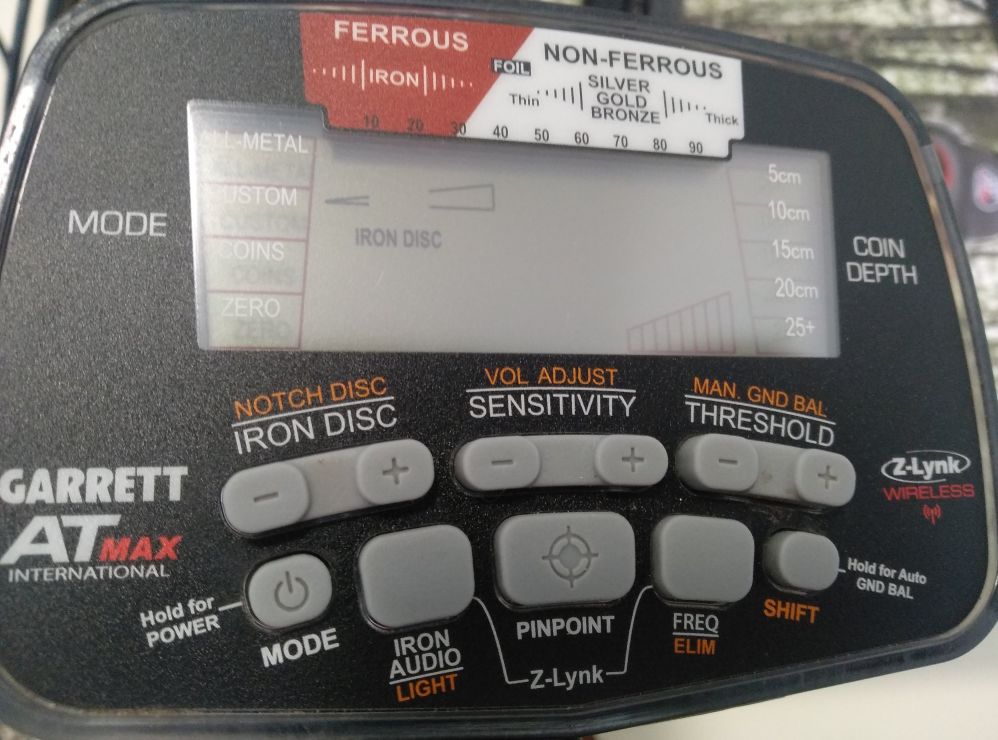
This model combines all the best features of Garrett AT PRO and Garrett AT GOLD since this device continues the product line. Actually, it really is an AT PRO metal detector, but this is its improved and upgraded version.
Garrett AT MAX is an amphibian metal detector and that’s why its headphones and coil connectors, control buttons and battery unit lid are protected from possible moisture ingress. Due to this you can easily go coin and jewelry hunting up to 3 meters deep under water. Rain, dust, dirt and even snow are not a problem at all for this metal detector.
The headphones use wireless Z-lynk technology – it has no transmission delay and it is several times faster than Bluetooth devices. Wireless headphones are not just convenient to use, but they also provide more accurate target response.
Optimized 13,6 kHz operation frequency ensures detecting even tiny objects including coins, relics and even gold nuggets, though the device isn’t classified as a specialized cold prospecting metal detector. It is possible to shift the operation frequency that’s why interference from other devices or transmitting lines won’t affect the MD efficiency in any way.
The display has a backlight which will be very helpful when it’s dark. You can see all the info about your target on the device display including Target ID and 40-segments discrimination cursor.
Adjustable manual and automatic ground balance function allows treasure hunting on soils with high mineralization level and on saltwater beaches as well. Scalable threshold provides more precise information about the target found.
This is an upgraded device for beach hunting and common treasure hunting. It is waterproof, capable of working deep under water, it has high operation frequency to look for coins and jewelry – what else could be possibly needed? As for the device demerits, sadly, none of them have been reported yet, so we have no information about them. However, considering the manufacturers experience in designing all its previous MDs, this new device has no drawbacks and none will be found.
- MAXIMUM DETECTION DEPTH: 13.6 kHz frequency and enhanced electronics provide…
- Z-LYNK WIRELESS TECHNOLOGY: Near-zero delay audio with MS-3 wireless headphones…
- TRUE ALL METAL MODE: Detects all metal types with maximum depth and sensitivity…
- IRON AUDIO FEATURE: Identifies discriminated iron, helping you avoid junk…
- ULTIMATE BUNDLE: Includes MS-3 headphones, Pro-Pointer AT Z-Lynk for precise…
- MAXIMUM DETECTION DEPTH: Enhanced electronics and 13.6 kHz frequency provide…
- Z-LYNK WIRELESS TECHNOLOGY: Experience near-zero delay audio with included MS-3…
- TRUE ALL METAL MODE: Detects all metal types with the greatest possible depth…
- IRON AUDIO FEATURE: Audibly identify discriminated iron to avoid digging…
- ALL-TERRAIN VERSATILITY: Fully waterproof up to 10 feet, with backlit display…
Last update on 2025-06-09 / Affiliate links / Images from Amazon Product Advertising API / Source: Amazon Affiliates
| Model | Garrett AT Max |
| Weight | 3.03 lbs (1.4 kgs) |
| Length (Adjustable) | 43″ to 56″ (1.09m – 1.4m) |
| Batteries | 4 AA |
| Headphones | Included, wireless |
| Warranty | 2 year |
| Circuit Type | VLF |
| Standard Searchcoil | 8.5″ x 11″ DD PROformance |
| Operating Frequencies (kHz) | 13.6 |
| Water resistance | Waterproof metal detector |
| Submersion Depth | up to 10 feet |
| Iron Discrimination Segments | 44 |
| Ground Balance | Manual |
| Search Modes | 4 (all Pro Audio) |
| Audio Threshold | Yes |
| Sensitivity/Depth Adjustments | 8 |
| Electronic Pinpointing | Yes |
| VDI (0 to 99 scale) | Yes |
| Build-in flashlight | Yes |
| Enhanced Detection Depth | Yes |
| True All-Metal Mode | Yes |
| Auto Ground Balance Window | Yes |
| Iron Audio™ (Disc. Modes) | Yes |
| All Metal Iron Audio | Yes |
| Fast Recovery Speed | Yes |
| Target Depth Indicator | Yes |
| Battery Condition Indicator | Yes |
Minelab Equinox
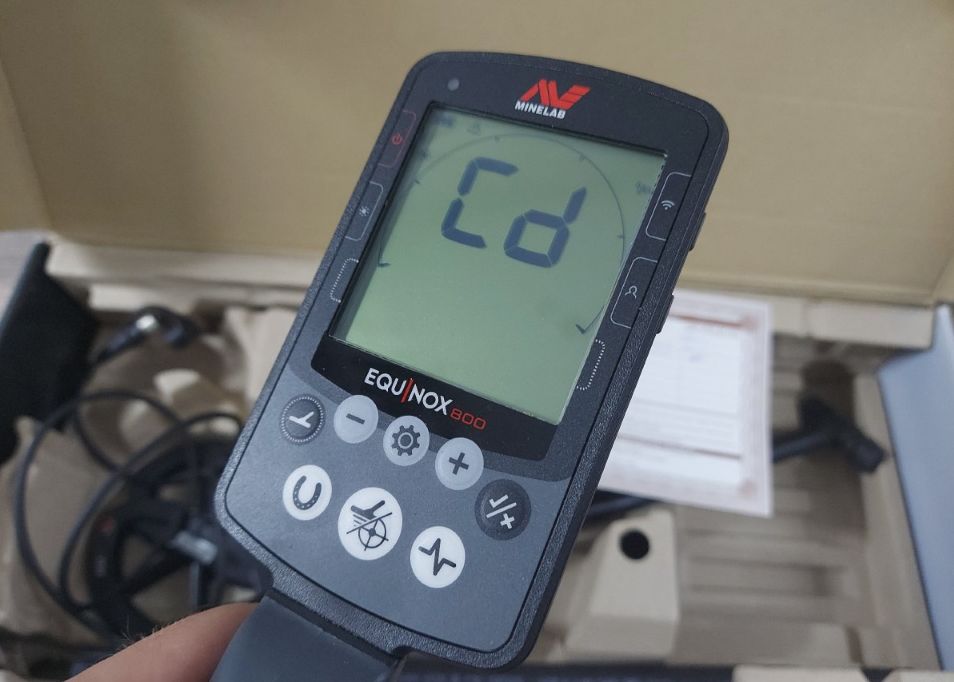
Minelab Equinox is a multi-purpose metal detector meant for various types of treasure hunting. You can drown Equinox into water up to 5 m (10-feet). The device is equipped with three manufacturer’s programs for beach hunting as well as for working in fields and parks.
When using multi-frequency mode (Multi-IQ), the device scans the ground using 5 frequencies simultaneously (5, 10, 15, 20, 40 kHz), which increases the search depth and excludes phantom signals occurrence as well as allows to conduct any type of treasure hunting.
Adjustment simplicity together with professional functions the device offers allow us recommending Minelab Equinox for beach metal detecting. Several operation frequencies is all that is needed for such a thorough search, that nothing is left behind you. Besides, the device is a multi-purpose one – you can use it for beach hunting as well as to search in fields or parks. At the same time its wireless headphones won’t get stuck in every bush you pass by.
- SIMULTANEOUS MULTI-FREQUENCY. The Equinox 800 combines the power of multiple…
- FULLY WATERPROOF. Don’t stop your search at the beach or the bank. This metal…
- 4 DETECT MODES. Easily select from Park for high-trash recreation areas, Field…
- ACCURATE TARGET ID. Confidently sort trash and treasure thanks to the fast and…
- SLEEK & LIGHTWEIGHT. The lightweight design is easy to operate, allowing you to…
- 4 Detect Modes (Park, Field, Beach, Gold)
- 6 Frequency Options (Multi, 5kHz, 10kHz, 15kHz, 20kHz, 40kHz)
- Bluetooth Headphones and WM 08 Wireless Module Supplied
- Simultaneous Multi-Frequency
- Waterproof Design
Last update on 2025-06-09 / Affiliate links / Images from Amazon Product Advertising API / Source: Amazon Affiliates
| Model | Minelab Equinox 800 |
| Technologies | Multi-IQ/Bluetooth |
| Weight | 1.34 kg (2.96 lbs) |
| Length (Adjustable) | 1440 mm (56.7″) |
| Batteries | In-built Lithium-ion |
| Headphones | Included, bluetooth |
| Warranty | 3 years |
| Operating Principle | VLF |
| Standard Searchcoil | 11-inch Double-D |
| Frequencies (kHz) | Multi, 5, 10, 15, 20, 40 |
| Water resistance | Waterproof |
| Submersion Depth | up to 3m/10-feet |
| Noise Cancel | Yes |
| Ground Balance | Auto/Manual |
| Modes | Park, Beach, Field, Gold |
| Audio Threshold | Yes |
| Sensitivity Adjustments | 1-25 |
| Electronic Pinpointing | Yes |
| VDI (0 to 99 scale) | Yes |
| LCD Backlight | Yes |
XP Deus II
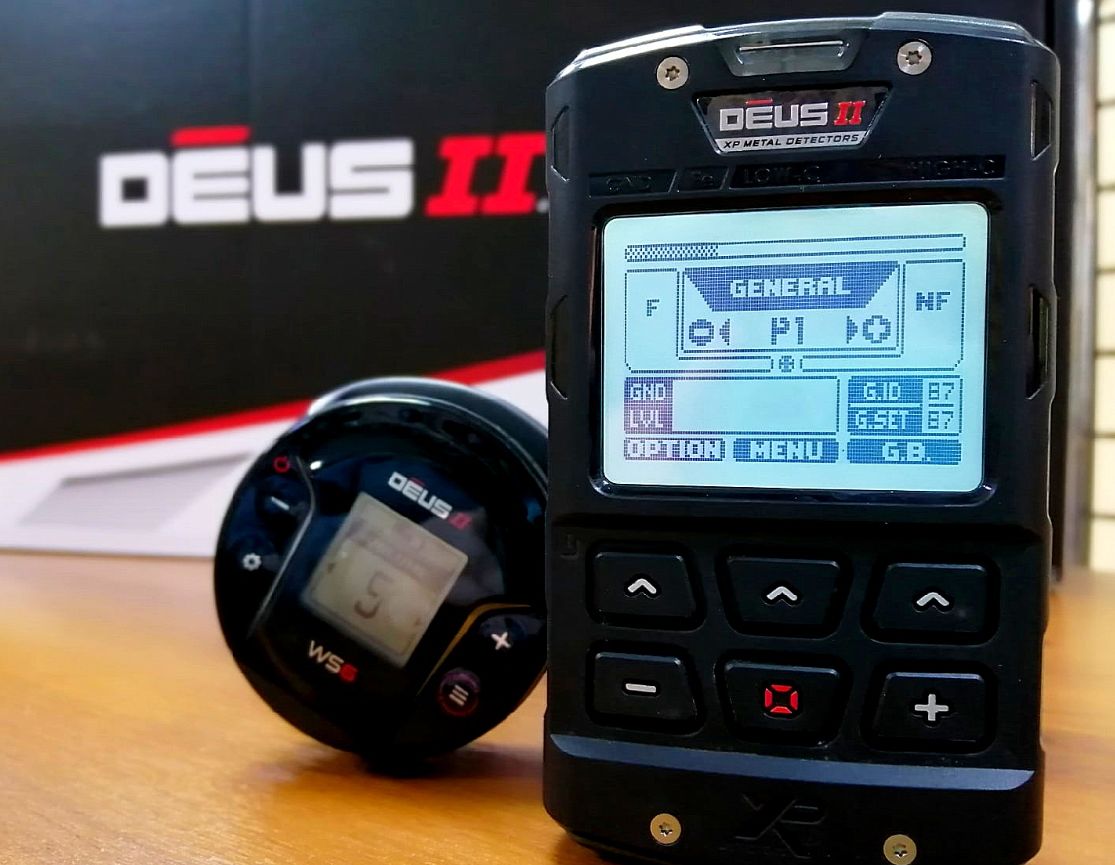
XP Deus II is a metal detector designed in 2022 that is one of the best multipurpose metal detectors nowadays. It is fast both for ground and underwater metal detecting, with FMF ® technology (fast multifrequency technology), extra lightweight (it weighs just 800 grams), the device is mobile and completely wireless: its control unit, search coil, headset, connection with a pinpointer are wireless. This is the best metal detector model designed by XP.
The most important about this novelty is its own technology, FMF – Fast Multi Frequency. This means the ability of the device operation simultaneously using a multifrequency from 4 to 45 kHz. At that, the frequencies in multi-frequency mode will be selected according to the device operation mode selected.
While XP Deus predecessor was good in many ways but not for beach hunting, XP Deus II can be used not only for beach hunting but the device also can be submerged up to 20 meters deep!
XP Deus II is as light weight as possible (it weighs 815 g max), which means that the device is very convenient in use. Since we all know how hard it is to sweep with any other device and then your hand starts aching. Now these issues are settled and you can enjoy using this metal detector.
XP Deus II can be considered the most light-weighted, ergonomic, and multipurpose metal detector with the highest efficiency when searching for any targets under any conditions. It is obvious that here we have a really new device, not just a veiled upgrade of the previous device model.
- World’s first fully wireless Fast Multi-Frequency (FMF) metal detector with…
- Including the MI-6 pinpointer, the first pinpointer on the market to offer…
- Choose one of the 12 Fast and simultaneous Multi Frequency factory programs or…
- Retune: re-calibrate the pinpointer when operating by briefly pressing the…
- With wireless headphones, fully rainproof, foldable, compact and lightweight,…
- 12 factory programs to suit all terrains in all conditions, the DEUS II RC has…
- IP68 : Certified for submersion up to 20m/66ft, waterproofing and pressure…
- Shockproof remote control in order to detect in all conditions with a product…
- Easy to handle, the remote control can be clipped and unclipped in 2 seconds……
- The control module allows you to adjust the internal settings of your DEUS II….
Last update on 2025-06-09 / Affiliate links / Images from Amazon Product Advertising API / Source: Amazon Affiliates
| Weight | |
| Total detector weight with batteries | 750-815 g |
| Stem weight | 370 g (S-Telescopic) – 305 g (S-Telescopic lite) |
| Remote weight with battery | 150 g |
| Headphone weight with battery | WS6: 82 g – WSA II: 72 g – WSA II XL: 250 g |
| Coil weight | 22.5 (9’’) – 345 g; 28 cm (11’) – 470 g; 34×28 cm (13’’x11’’) – 570 g |
| Length | |
| Stem | Fully telescopic, S-shaped |
| Length of folded stem | 58 cm |
| Length of extended stem | 130 cm |
| Coils | |
| Wireless coils | DD 22.5cm-9’’/28 cm-11’’/34x28cm-13’’x11’’ (fully waterproof 20m – 66 ft) |
| Temperature | |
| Operating T° | 0 to + 40°C |
| Max ambient T° during charging | 0 to + 40°C |
| Recommended storage T° | 25°C |
| Waterproofness | |
| Coil | IP 68 – 20m – 66 ft |
| Bone conduction headphones | Waterproof IP68 – 20m – 66 ft (optional) |
| Wireless Headphones optional | WS6 (rainproof) – WSAII (rainproof) – WSAII XL (IP 68-1m) |
| Batteries | |
| Batteries | Remote/Coil: 700 mAh – Headphones: 320 mAh |
| Battery level indicator | Yes: Remote/Headphones/Coil/MI-6 |
| Wireless Remote Control battery life | ~ 15 to 30H depending on audio output activated |
| Wireless Headphone battery life | ~ 15H WSAII/WS6 |
| Wireless Coil battery life | 8H to 20H depending on programs and frequencies |
| Mains power charger | Depending on version, Input 100-220V 50/60Hz, Output 5V- 1A max |
| Charging time | ~3 h |
| Features | |
| Software updates | Yes, by USB/Internet connection |
| Hip mount remote control case | Yes |
| Headphones storage case | Yes (WS6, WSA II) |
| Warranty | Five years parts and labor. Batteries, chargers and connectors have a 2 year warranty |
| Settings | |
| Detection frequencies | Simultaneous Multi Frequency or between the 49 single frequencies from 4 to 45 kHz |
| Sensitivity | 99 levels |
| Sound type | Different sound options: PWM, SQUARE |
| Audio Volume | 10 levels for each audio output |
| Reactivity | 9 levels (0/0.5/1/1.5/2/2.5/3/4/5) |
| Audio Response | 8 levels |
| Iron Volume | 6 levels |
| Multi Tones | 1, 2, 3, 4, 5, Pitch and Full Tones 1 and 2 + EXPERT modes |
| Ground balance | Tracking, Grab, Manual |
| Multi-Notch | Yes, with adjustable window width |
| Pinpoint | Yes, with and without Autotune – Audio and visual |
| Discrimination | Audio and visual/ferrous bottle cap rejection on 5 levels/Silencer |
| Threshold | Threshold and Audio frequency adjustable |
| Equalizer | 4 Bands configurable |
| Programs | 12 factory programs + 12 users |
| Backlight | 20 levels adjustable, very low power consumption |









